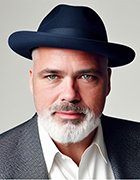
jamesteohart - stock.adobe.com
Intel CEO Pat Gelsinger out; board searches for new CEO
Gelsinger's turnaround plans -- including layoffs, restructuring and foundries -- weren't enough to pull the company out of trouble.
Intel CEO Pat Gelsinger has retired, ending a nearly four-year struggle to help the troubled company regain its former position as the world's largest chipmaker.
Gelsinger officially stepped down Sunday. The board of directors replaced him with two interim CEOs: CFO David Zinsner and Michelle Johnston Holthaus, executive vice president and general manager of Intel's Client Computing Group. As co-CEO, Holthaus will also be responsible for Intel's Data Center and AI and Network and Edge groups.
The board formed a search committee to find a permanent replacement for Gelsinger, whom the directors thanked for "many years of service and dedication to Intel across a long career in technology leadership."
Gelsinger's struggle to rebuild Intel came under intense scrutiny after an Aug. 1 earnings report showed significant losses and a revenue forecast below Wall Street expectations. To save cash, Intel suspended dividends it had been paying for more than 30 years and cut 15% of its roughly 110,000-person workforce. Since Gelsinger took the helm in 2021, Intel's stock price has fallen more than 50%.
"While we have made significant progress in regaining manufacturing competitiveness and building the capabilities to be a world-class foundry, we know that we have much more work to do at the company and are committed to restoring investor confidence," independent board chair Frank Yeary said in a statement. "As a board, we know first and foremost that we must put our product group at the center of all we do."
In the same statement, Gelsinger said leading Intel had been the honor of his lifetime.
 Pat Gelsinger
Pat Gelsinger
"Today is, of course, bittersweet as this company has been my life for the bulk of my working career," Gelsinger said. "I can look back with pride at all that we have accomplished together. It has been a challenging year for all of us as we have made tough but necessary decisions to position Intel for the current market dynamics."
Gelsinger had worked at Intel for 30 years and became the company's first CTO before leaving in 2009. He returned in 2021 after a 12-year stint as CEO at VMware. His strategy was to rebuild Intel's once-dominant position in the chip manufacturing industry by opening its foundries to all chip designers, including competitors.
While many analysts believed Gelsinger had the right plan, the turnaround wasn't fast enough.
"He's been there over three years, so the board gave him a long time to try and pull the company out [of trouble]," said Jack Gold, principal analyst at J.Gold Associates. "It didn't happen."
Gelsinger was a leading proponent of the Chips and Science Act, enacted during the Biden administration. His advocacy and negotiations with the administration led to a final agreement last month to receive nearly $7.9 billion in federal grants, the largest direct subsidy from the act. Although the amount was less than initially planned, the subsidies made it possible to receive more money later if the company hit negotiated benchmarks.
The chip industry has changed dramatically since Intel's heyday. Nvidia, once a niche maker of GPUs for gaming and PCs, skyrocketed to become the leading manufacturer of processors in today's AI era. Nvidia has a market capitalization of more than $3 trillion.
Intel's longtime rival AMD has also done better than Intel in the AI market. Its Instinct AI accelerator has gained market share against Intel, while the latter's Gaudi chip has failed to gain traction so far.
Overall, the success of AMD and Intel has cost the latter's data center business billions of dollars in revenue, analysts said.
"I think it's more important for their data center business to get healthy on the product side because that's the heaviest growth opportunity," said Alvin Nguyen, an analyst at Forrester Research.
The next Intel CEO will need chip industry experience and a track record for turning around companies, analysts said. Also, the next CEO should continue with Gelsinger's strategy to hold onto the company's foundries to help revive the U.S. chip manufacturing industry -- once the largest in the world.
Today, Taiwan Semiconductor Manufacturing Co. is the world's largest semiconductor contract manufacturer.
"One of the reasons for the glory years of Intel was because of its foundry -- the close coupling between engineering on the product side and engineering on the foundry side," Gold said. "They were able to make a lot of advances that they couldn't have otherwise."
Antone Gonsalves is an editor at large for TechTarget Editorial, reporting on industry trends critical to enterprise tech buyers. He has worked in tech journalism for 25 years and is based in San Francisco. Have a news tip? Please drop him an email.





